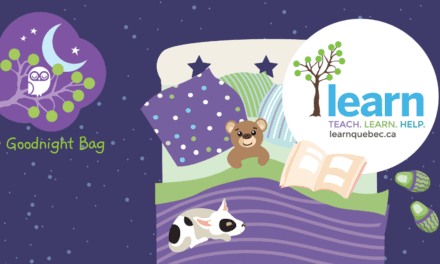Earlier this year, Susan van Gelder started the conversation about blogging with her post here. She then inspired me to tell a story.
A good friend of mine, we’ll call her Clarisse, has a son in elementary school. And, like many sons across the province, starting from first grade, there are a few things about school that he found hard to swallow, among these, the forced reading of books and the writing of book reports. He likes to read, don’t get me wrong, and reads with gusto… except when he knows that he has to write about his book… every day. Then, the heavy artillery comes out. Avoidance techniques: “let me just get to this next level, mom!”. Moaning: “But Mo-o-om!!”. Shouting. Tantrums. The things he would never dare to say at school get said at home: “This is so boring. I hate this. It’s stupid. You never have to write about what you read. Etc.” When he is finally cajoled or coerced into writing, his prose is wooden and basic, even for his age. Mid way through the first grade, Clarisse, armed with the haunting image of the next eleven years of homework hell, approached her son’s teacher to see if he might consider making some changes to the daily writing practice. Perhaps, she suggested, we might try writing about whatever is interesting to the child, while still continuing with daily reading. The teacher was quick to agree to try a new way (for him) of approaching writing and the students were off! Miraculously, the nightly grumblings subsided as Clarisse’s son wrote about Lego, Spiderman, his dogs, and anything else that struck his fancy. The teacher reported that by the end of the year, the quality of his students’ writing had improved significantly, and students were writing at a higher level than in previous years. (If this is interesting to you, check out Taking Action on Adolescent Literacy by Irvin, Meltzer and Dukes).
So what does this have to do with blogging (as indicated by the title of this post)? Clarisse’s son doesn’t need to use a blog to write about his Lego project, or his most recent effort to figure out how to get webs to fly out of his wrists. So how can blogging in any grade benefit young writers? There are three main, and tightly intertwined, reasons for choosing a blog for your students’ writing practice: 1) Blogs increase motivation for writing; 2) Blogs create a community of writers and 3) Blogs allow for a variety of text types.
Blogs increase motivation for writing
As educators, we all would like our students to want to write and to feel some gratification from the exercise. It would surprise many of us to realize that, in fact, young people are already prolific writers – in the genres of texting and status updates! And so, because of their relationship with other social media, blogs are cool. Using the computer, or your mobile device to do your homework adds a distinct cachet, as reported in this article in The Independent. Even with the proliferation of technology in our schools, regular computer use remains sparse and has not lost its pulling power. In addition, blogging technology goes beyond the capabilities of a word processing document. Students can add an image from the Creative Commons, or link to things that are relevant in their post, including posts from other bloggers. A blogging platform allows students to tag their work with keywords, creating categories and interrelationships seamlessly and easily. And, prosaically, professional writers these days tend to use the computer to write, and this resonates with young writers as well.
Another way that blogs, even those restricted to a single class, increase motivation for writing is by providing young writers with an authentic audience. The ELA and SELA programmes both mention linking literacy learning to the world through audiences of increasing variety. Through a classroom blog, students can write for their teacher, for their parents and for each other. They can write for other young people or people of all ages and from around the world. This kind of access to audiences is authentic in that it reflects the way the world communicates today.
Blogs create and nurture a community of writers
When students write for each other, and engage with each other in writing (through comments and discussion), they are participating in a community of writers. The beauty of blogging is that it is a one-two literacy punch: the writer writes an initial post, and other writers respond through the comments, or through references to the original post in their own blog entry. If you are worried about initial participation in commenting on the work of others, consider making commenting on other people’s work a requirement of your writing classroom.
Blogs also allow writers to witness their own progress as well as that of their peers, by easily providing a catalogue of one’s writing, much like a portfolio. Students are more likely than with a traditional writing medium to read works written by writers at their own level, or close to it. They are also accountable for helping the community grow and prosper, and this sense of belonging is a powerful motivator for learning.
Blogs allow for a variety of text types
Gone are the archaic days of the early ’00s when a blog was limited to text+ pictures only! Today’s blogging platforms seamlessly (for the most part) handle audio and video files. Students can use a variety of media to express themselves and you, the teacher, can set specific requirements as to their frequency. A lot of the media choices made will depend on the type of blog that you have, and the type of blog entries you are expecting. Students might have an assignment to take a photograph as a text, or create a podcast interview or short video.
As with any pedagogical device, the devil is in the details. Legal, ethical and logistical considerations abound, not to mention issues around how to organize a blog for maximum benefit to young writers. The next post in this series will focus on these four interdependent categories and will hopefully leave you with something to start with in the classroom. Meanwhile, if you are interested in pursuing this discussion, why not join me for an online web event next week on October 15th at 8pm. All details here.





